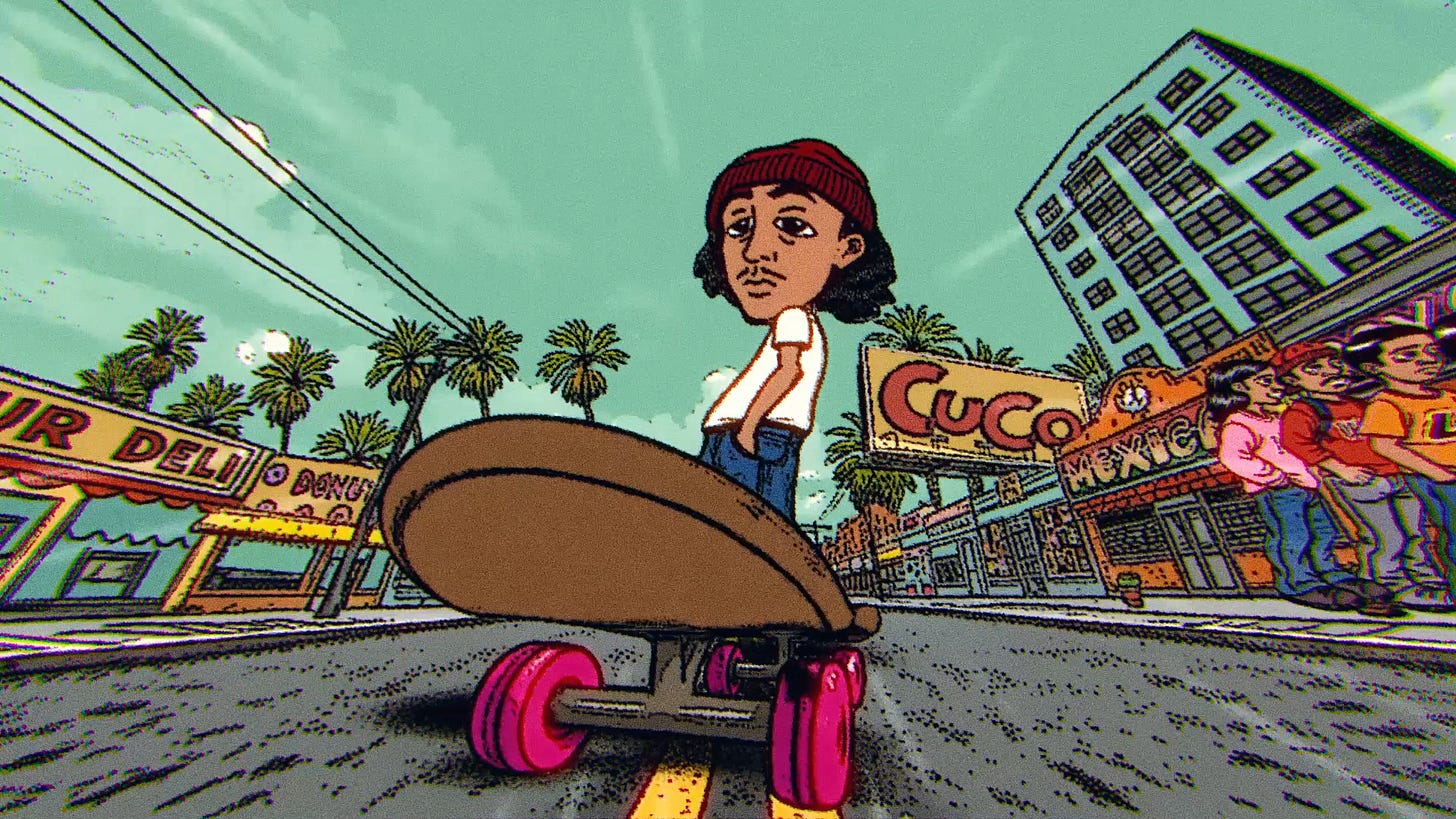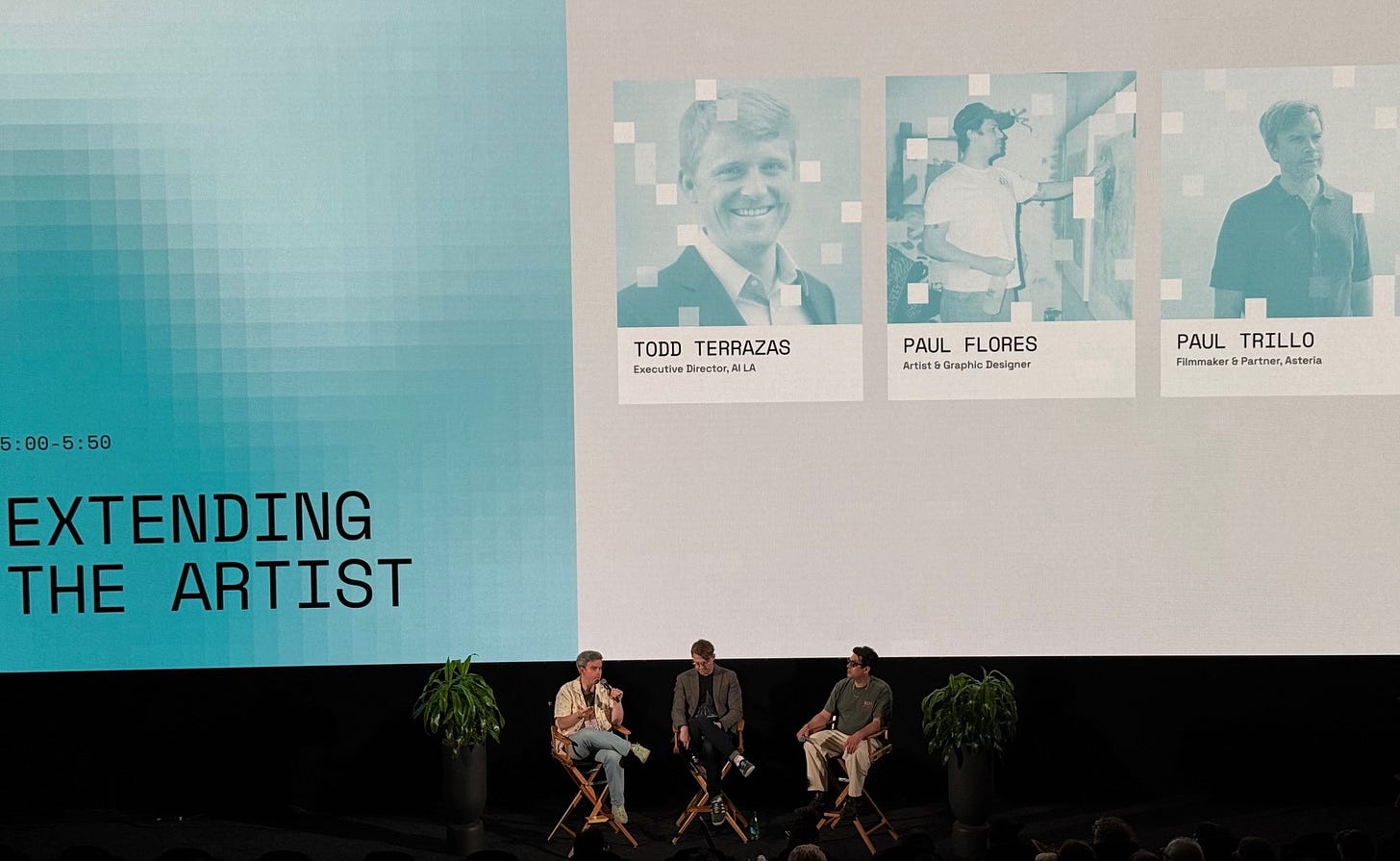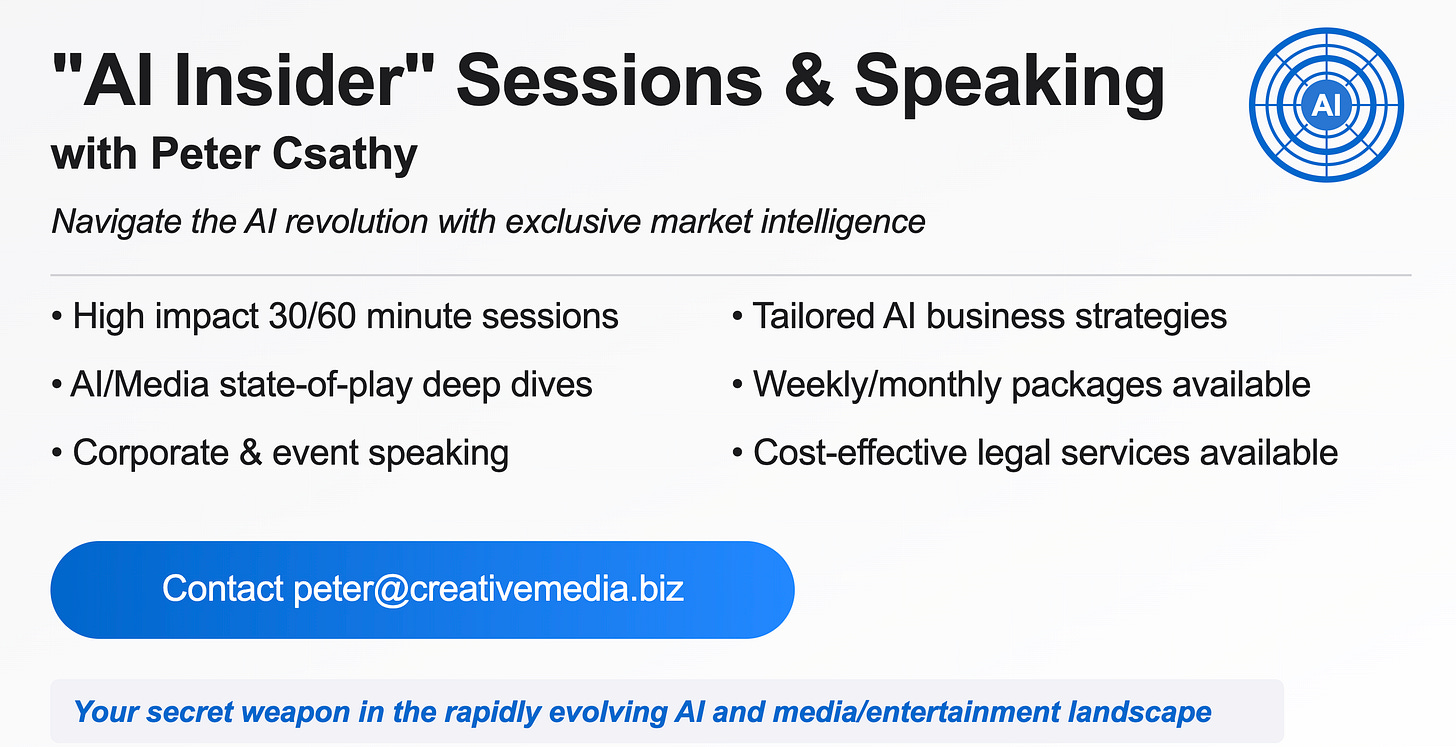AI Used To "Extend The Artist" Is Very Different Than "AI Art" (And That Gives Me Hope)
Filmmaker Paul Trillo and Artist Paul Flores Break New Ground With Their Brilliant New AI-Elevated Short Film "A Love Letter To LA" (Triggering My "A-HA" Moment)

Welcome to my weekly “brAIn” dump! My “mAIn event” features a much-needed positive, and entirely unexpected, “a-ha” moment at last week’s annual “AI on the Lot” event in LA (I think it may trigger the same reaction for you). Then, it’s the “AI Litigation Tracker” — updates and expert legal analyses on the key generative AI/media copyright infringement cases by Partner Avery Williams of McKool Smith (get the “Tracker” here via this link). Fewer words. More videos in this newsletter.
I. The mAIn Event - AI Used To Extend The Artist’s Art & Vision (Is Very Different Than “AI Art”)
AI LA’s third annual “AI on the Lot” entertainment/AI event took place last week, and it was impressive — living up to my hype of being one of those rare “must attend” events. Kudos to Todd Terrazas for making it bigger and bolder than ever before — right in the heart of Culver City, where LA-LA Land meets Silicon Beach. Amazon Studios and Apple Studios are right there — the perfect metaphor for the state of the entertainment industry today, where Tech giants are the new movie moguls.
I attended this year’s event feeling increasingly pessimistic about the role of, and cultural respect for, human artists in an increasingly AI world (one of my recent posts asked the question, “My Son Just Graduated From Film School. What’s The Point In An AI World?”). But two particular conversations during my single day at the event left me with a new sense of hope — and most critically, a new understanding of how professional Artists can harness AI’s power to create something entirely new, authentic — and never-before-possible — by working collaboratively as a team with kindred AI-proficient creative souls.
AI Used By Artists To Extend Their Art Is Not “AI Art”
What I’m talking about here is AI used to extend an Artist’s art and vision — which is something very different than “AI Art,” where any individual can create their own form of “art” simply through a series of text prompts. We all know what that typically looks like, and that’s the way I’ve mostly thought of the state of AI in the visual arts up ‘til now. In my view, “AI Art” breeds some interesting imagery, to be sure. But ultimately it generally gives “lazy” satisfaction via instant “creative” outputs (to be clear, I use “lazy” not pejoratively, but rather to connote passivity).
I’ve always wanted to see so much more than that kind of flood of AI-powered works in order to buy into claims that AI can help users generate entirely new modes of art — new, as in truly “original.” I was in search of the “AI meets art” holy grail — the creation of an entirely new creative canvas — a new medium — on which established Artists can paint. And can do it on THEIR terms. And for the first time, I found that break-through creative vision effectively and eloquently articulated at AI on the Lot.
My “A-HA” Moment
My “a-ha” moment came to me during the very last session on day 2 — titled “Extending the Artist” — which featured leading experimental/AI filmmaker Paul Trillo (whose work I’ve frequently featured in this newsletter) and LA-based visual artist/painter Paul Flores, whose celebrated art features LA’s vibrant colors and street scenes via his bespoke throwback “street/skater punk” style. Trillo and Flores worked together with the team/crew at Asteria — Trillo’s new AI film company whose vision is to use only 100% ethically sourced genAI platforms like Moonvalley (i.e., AI models trained only on fully licensed content) — to fully realize their vision. I repeat. 100% ethically sourced, fully licensed, “clean” content for training. That’s something to celebrate!
Here, Trillo and his Asteria team trained their AI model exclusively on Flores’ artwork (with his active participation and consent) to create their breakthrough collaboration “A Love Letter To LA” that features LA musician CUCO. This creative collab essentially extends Flores’ otherwise static visual art — painstakingly made with incredible detail (think of classic French artist George Seurat’s “pointillism”) — into a 5+ minute animated short film, something otherwise not possible in a way that preserves Flores’ signature detail and remains authentic to his celebrated style and art (as if Flores literally drew every single frame himself which would have been a Herculean — if not impossible — task without the extensive power of generative AI).
It’s virtually impossible to describe what I precisely mean here in words. So instead, first, watch this “behind the scenes” video below that showcases how Trillo, Flores and a highly creative and innovative crew developed a new language of animated filmmaking leveraging the power of generative AI.
WATCH THIS “BEHIND-THE-SCENES” VIDEO FIRST, TO FULLY APPRECIATE THE FINAL SHORT FILM “A LOVE LETTER TO LA” (which is the second video below).
Now watch the finished animated film “A Love Letter To LA” — and notice all the extensive detail unique to Paul Flores’ art, including his signature “dots” and “dashes.”
“A Love Letter To LA” is no “AI film” made using simple AI prompts. Instead, it is a compelling creative explosion made possible by a multi-disciplined innovative crew leveraging generative AI to extend Flores’ art — which is what Flores, the Artist, wanted to do. The end result is something entirely new — an extended creative palette for professional artists like Flores to use (if they, the Artist, choose to use it) — and a new way for Artists to delight their fans. No “AI art” cannibalism here.
Congratulations to Trillo and the entire team at Asteria for breaking new ground — empowering new creative frontiers for professional Artists like Flores — and focusing first on the Artist to be creatively collaborative and authentic to their art and vision. This new mode of art — which extends the Artist who remains in control of his/her vision — is the kind of AI art I can get behind.
What do you think? Send me your feedback to peter@creativemedia.biz.
Want to Work Together?
Reach out to me at peter@creativemedia.biz.
II. AI Litigation Tracker: Updates on Key Generative AI/Media Cases (by McKool Smith)
Partner Avery Williams and the team at McKool Smith (named “Plaintiff IP Firm of the Year” by The National Law Journal) lay out the facts of — and latest critical developments in — the key GenAI-focused IP litigations below. All those detailed updates can be accessed via this link to the “AI Litigation Tracker”. McKool is a leader in both copyright and patent-related AI litigation — and all IP and general media, entertainment, AI and tech matters.
(1) Kadrey v. Meta
(2) Ziff-Davis v. OpenAI
(3) The New York Times v. Microsoft & OpenAI
(4) Thomson Reuters v. Ross Intelligence
(5) In re OpenAI Litigation (class action)
(6) Dow Jones, et al. v. Perplexity AI
(7) UMG Recordings v. Suno
(8) UMG Recordings v. Uncharted Labs (d/b/a Udio)
(9) Getty Images v. Stability AI and Midjourney
(10) Universal Music Group, et al. v. Anthropic
(11) Sarah Anderson v. Stability AI
(12) Raw Story Media v. OpenAI
(13) The Center for Investigative Reporting v. OpenAI
(14) Authors Guild et al. v. OpenAI
NOTE: Go to the “AI Litigation Tracker” tab at the top of “the brAIn” website for the full discussions and analyses of these and other key generative AI/media litigations. And reach out to me, Peter Csathy (peter@creativemedia.biz), if you would like to be connected to McKool Smith) to discuss these and other legal and litigation issues. I’ll make the introduction.
About My Firm Creative Media
My firm and I represent media companies and rights-holders for generative AI content strategy and licensing, with deep relationships and market insights and intelligence second to none. We know the key players inside AI tech and pride ourselves in reaching THE key decision-makers and influencers in record time to execute. Not just talk. We specialize in breakthrough business development and M&A and cost-effective legal services in the worlds of media, entertainment, AI and tech.
Reach out to me at peter@creativemedia.biz to explore working with us.
Send your feedback to me and my newsletter via peter@creativemedia.biz.







I think a problem is that we have two versions of the word art that people tend to confuse.
I made many drawings in the past, including illustrations for my own books. Some people said, "I love your art." And I said, "I don't make art. I just make illustrations." I tried to distinguish art (as in art pieces worthy of being purchased for the sake of being art) versus simple creative output (illustrations that served a functional purpose in a book).
People who make "AI art" don't create art (in my opinion). They just generate creative output with a purpose, in the same way like I made simple illustrations. It's just that we can now do that faster with gen AI, which is useful. But it's not art.
It is only art when someone is willing to pay for the outcome, not because it's functional but because it's artful.